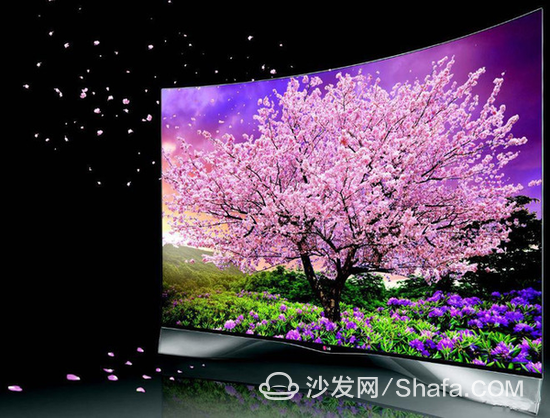The bigger and bigger the color TV, the more demanding users are for health and eye protection. Constrained by the imaging principle, large-screen LCD TVs and OLED TVs are difficult to overcome visual fatigue or injury caused by long-time viewing, while laser TVs using the fourth-generation display technology win LCDs and OLEDs in visual comfort. The outstanding technical advantages of the eye will make laser television become the dominant player in the large-screen TV market.

Human life has been inseparable from the display screen and television. The main source of harmful blue light is the LED LCD screen. Its conventional blue LED backlight technology has formed what we call the problem of harmful blue light. With OLEDs without harmful blue radiation, organic TVs have become the new choice.
At present, the household appliance industry in the market is a mixed bag. The major TV manufacturers have launched their new products under the banner of “OLED Self-luminous TVâ€, “Healthy Eye TVâ€, and “self-luminous organic TVâ€. The difference.
One, three define the difference
OLED self-lighting TVs use OLEDs (Organic Light-Emitting Diode) to provide self-illumination, infinite contrast, ultra-wide viewing angle, ultra-fast response, and ultra-thin advantages, and a health TV using OLED technology in screen displays.
Healthy eye TV emits laser light through a blue laser light source, projects three-color light through the color wheel and then images it on a DMD chip, then forms a complete image through a series of reflections, and finally enters the human eyeball. Because the human eye always sees reflected light, it does not directly face the laser light source, thereby protecting the eyes and reducing the blue light damage of television products.
The self-luminous organic TV adopts the OLED organic screen (WRGB four-color) to create a new generation of televisions with curved display devices of different curvatures, and is an upgraded version of the mainstream LCD screen televisions on the market.
Second, "OLED TV" and "LCD TV" difference
LED TV refers to the LCD TV with LED backlight. Actually, it is still LCD LCD screen, but the backlight uses LED lamp beads to replace the original CCFL fluorescent lamp.
OLED features the elimination of liquid crystal and backlight modules. The original device is reduced from six to three, and its thickness is only one-third of that of LCD TVs. With organic light-emitting semiconductors as all-solid-state components, it has good shock resistance and can be adapted to harsh conditions. surroundings. Organic light-emitting semiconductors are self-luminous, have infinite contrast, and display more realistic colors. Compared with LCD, the display screen is still clearly visible even at the maximum viewing angle. The organic light-emitting semiconductor element is self-luminous and is adjusted by voltage, and the response speed is faster than that of the liquid chip part. Even if the high-speed motion picture is watched, there will be no tailing phenomenon.
Third, "OLED organic TV" and "OLED TV" difference
OLED organic TVs use OLED organic screens, which have advantages such as wide color gamut, wide viewing angle, and clearer than ordinary OLED TVs. OLED organic television as the second generation OLED display technology, the process is more mature, the cost and mass production is also greatly reduced the difficulty, easy mass production, accelerate the popularity of OLED.
Fourth, OLED technology to reduce the principle of blue light
Each pixel of the screen panel of the OLED TV can be self-illuminated independently, and no backlight is needed. OLED organic light emitters have 33.17 million solid particles that can emit light automatically. As long as the input voltage is applied to the electrodes, the excitation layer can produce the desired color light. The generated blue light wavelength band is mainly concentrated at 460 nm, which is not harmful blue light. Smaller and less harmful to human eyes.
A OLED self-illumination TV is queried: whether the screen is an OLED screen
Fake self-illumination TV: LED screen. The LED screen is a retrogression of technology. Because it does not bring any benefits to consumers, it has been increasing costs. It is only a change of shape, but it also makes consumers pay more. The LED screen itself is not designed for curved surfaces and consists of many parts. When the screen becomes a curved surface, these components cannot follow the curved shape, which is the main reason why the LED curved TV body is thick and even the back is still using a flat design.
True self-illumination TV: OLED screen. OLED screen curved TV is not fully mature. It is difficult to conclude how long the OLED screen surface TV can last. This is a reason with the mobile phone. The key is to look at the personal use situation. The use of a long service life is short and the service life is long.
OLED display technology in the screen more than 20,30 inches, to TV panel size, OLED problems are many, many years have not been resolved, such as light decay speed, short life, technical defects, the image display is too bright , not enough natural, so OLED to today, the real value of promotion, can be profitable is a small size screen area below 10 inches, such as smart phones, small-size display devices.